Table of Contents
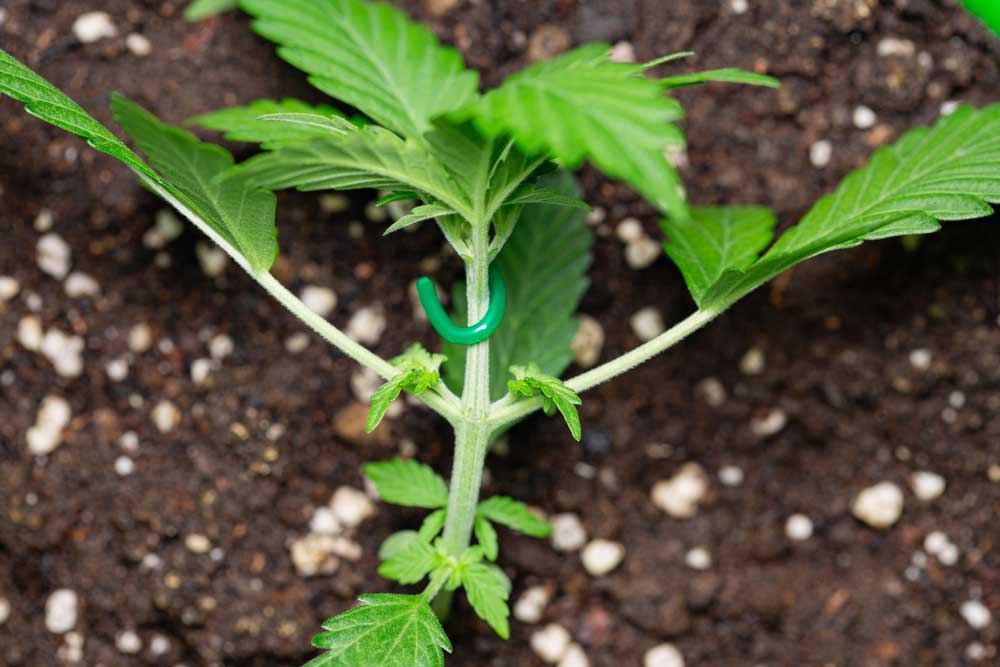
Life is, indeed, unfair. You may think that the discount item you bought for $10 at the store was cheap, and just a few meters away, a thrift store sells the same item for only $3. I mean, how sad is that? Extremely soul crashing. The same goes for our beloved cannabis plants. One stem will get all the sunlight while others are left lonely in the dark. Luckily, in the gardener’s world, Low-Stress Training exists. What is it exactly? How will it benefit the plant? Isn’t giving stress to the plant bad? You will know all the answers in a few.
Low-Stress Training (LST) simply put into words is to bend and tie the plants in order to train them into a shape that grows more efficiently. It does not involve harming the plant.
Auxin is a plant hormone that dictates a plant’s growth. It is highly concentrated at the top of the plant, and more of the growing focus is upwards through the main stalk. Training techniques are utilized to reduce this focused upward growth and encourage the growth of an even canopy with an increased number of buds instead of one main bud. Overall, low-stress training is a gentle way to make sure all parts of the plant get enough sunlight and for the plant not to get too tall. So, it isn’t bad.
Cannabis connoisseurs most probably know that plants normally develop a few healthier buds toward the top of the plant, with several smaller buds below. The same happens to many other flowers, fruits, and veggies on earth.
Over centuries, propagators have thought of ways to get more out of their plants using simple training techniques. Techniques such as topping and pruning plants, bending, Screen of Green, and all manner of other methods. Although different from each other, each one ensures the best use of space, light, and resources.
The ancient Egyptians are thought to have used low-stress training to horizontally grow fig trees more than 3,000 years ago. A famed method known as espalier was talked about in 17th century Europe. Espaliered hedgerows of fruit trees were a common sight. Aesthetically used in apple and pear orchards, it resulted in beautiful landscapes. Thus, low-stress training is a modern term for an old technique used to force fruiting trees to grow in a flat structure.
Phototropism is a phenomenon known when plant growth responds to light stimulus. The parts of the stem that are bent and now shaded will start to produce more growth hormones called auxins. This increases cell elongation on the sun-deprived side of the plant, with the effect of directing the growing tip towards the light. The lower branches will now be able to take in more energy and light. You can bend the secondary stems once they are formed, giving way to the tertiary stems to receive sunlight. You can now decide to begin flowering, depending on the available surface area and the number of plants being cultivated.
Its only drawback so far is that since the low-stress training is done hands-on and continuously (until no lower buds exist), the grower of a large cannabis garden may be exhausted at the end of the day from all the manual labor he or she will do.
The plant has to establish a strong root system before you can start. The best indicator is to count the nodes of a young plant.
The top of the plant is the main node, and under this, a second and third node will grow. The secondary nodes are developed after the main stem and will always stay behind the main top. Wait for the second node to form, and then you can start the training. Although not advisable, you can also apply LST a few weeks into flowering. Just make sure the stems are still flexible and won’t just snap. The flowering stretch is still considered a part of the vegetative phase, and the plant will still be able to be trained. No low-stress training should be done after this.
Some growers pinch or cut off the tops of their plants before starting low-stress training work. It is not a requirement but can be helpful as doing so can break the apical dominance of the marijuana plant, divides the main cola, and creates a more uniformed base of the plant for easier training.
It is a separate preparatory step and not part of LST. Other plant training methods are often used combined with LST to achieve the optimal results, and topping a young plant is very common to prepare the ground for low-stress training.
The LST method involves bending the plant as it grows and tying the branches down. We will further discuss this on a step by step basis on a later part of the article.
This method involves using a screen to create a ceiling. Instead of tying it down, you wait for the plant to grow through the screen, or you pull them through it. The entire plant is spread out to allow for better light to reach the entire plant. Once the branches begin to make their way through, you simply thrust the branches back down into the screen, weaving the branches around it. You will have a well-supported growing area that will produce more even colas.
You can use a trellis or mesh to separate and support the branches as this is practical and easy on the budget. The trellis is situated horizontally above the plant, and the branches weaved through the holes to hold them in place and shape the plant according to the growers’ needs. Vertically placed, this allows the grower to train the plant in two dimensions and a great way of supporting plants and saving space in the garden.
You can also employ a tubular trellis entirely surrounding the plant. This is a method preferred by outdoor growers in places where plants can grow to truly monstrous proportions, cultivated on soil or in huge pots of 400 gallons or greater capacity and with one or more layers of trellis mesh surrounding the plant to ensure full support for long branches with heavy buds.
You can use small weights to gently and gradually bend branches. This has the same benefits as using a trellis, and at the same time, it strengths the branches and prepares them for the weight of the buds to come. It is particularly useful in outdoor cultivation, where using small weights offers the advantage of allowing plants to move and sway in the wind.
The weights themselves should be small, and not too heavy. You can improvise from many household objects like steel nuts and washers attached by a thread, or old wine bottle corks with a wire pushed through the center and bent to make a hook at each end. Don’t forget to remove the weights as the buds increase in size and weight to avoid breakage.
Carefully feel how flexible the stem or branch is that you want to bend, so you know if you can work with it easily. If there is a tendency to snap, choose another. Visualize the type of shape you would like your plant. If you want, you can also pinch out the top leaves.
Tie the highest branch of the plant around the last internode, the space between the last set of leaves and the second-last set of leaves. It should be at a lower level than the rest of the plant. It is essential that you start low-stress training as soon as possible or when the plant is still young.
Keep all the stems about the same distance from the light. Bend using a twisty tie to secure it gently but firmly in position. Bend it in the direction you want it to go.
Here are some reminders that can help you when it comes to bending the stem:
Continue by organizing your canopy by bending the stems to the right places. You may arrange according to a shape you have in mind.
The branch will begin to grow up again after 24 hours of bending. Under a powerful light, it can take as fast as three hours. It will start low as the rest of the branches. As the secondary branches start to receive more light and grow up, you need to train them as well.
Once your canopy is properly filled and uniform, you can repeat the tying process.
Once your cannabis plants start to flower, they will grow hastily. At this stage, pruning the lower branches that have zero chance of reaching or getting any light is a good idea, it will encourage the plant to be more productive up top where it matters. It also will allow better ventilation for your plants.
Another technique some growers do is to turn the lights off two full days before harvest. The light should not touch the plants at all. This tricks the plant, making it think it’s dying. It will then release all the resin in its system, placing it right onto the buds that have formed. At harvest, you will have beautiful crystallized trichome-rich buds in no time.
Auto-flowering plants depend on age to fully mature and produce buds. Less light or more light does not change its flowering cycle. Because of this, it can reach full maturity within just two or three months.
One thing to keep in mind for auto-flowering plants, they should never be cut. Plants typically need some time to recover an invasive procedure such as cutting, time that auto-flowering plants just don’t have.
Now that you have read upon the stress-free effect your cannabis plant can get from Low-Stress Training; you may start early with a young seedling waiting to be shaped into a perfectly uniformed canopy and with lots of large buds to grow. It’s as easy as bending and then securing the stem to be able to produce crops of higher yields.
I hope this guide was helpful enough for you to realize that when a cannabis grower’s skill gives plants an equal chance of healthier growth, then you can truly say that all is fair in Low-Stress Training.

Curious about growing weed in a healthy, effective way? Welcome to the realm of weed hydro! This method uses water instead of soil, delivering n
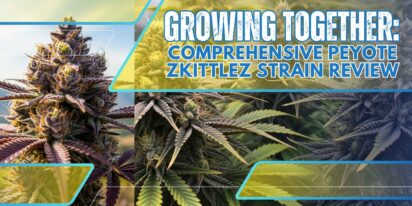
Peyote Zkittlez is a unique cannabis strain that has quickly gained dedicated followers among enthusiasts and patients alike. Its parentage—Zk
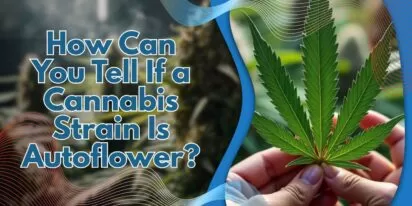
As growers, we want strains that work well, are strong, and are of good quality. Autoflowering cannabis strains are a big step forward for both
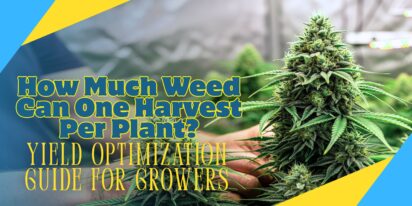
Pot growers always ask the same basic question: How much weed does a weed plant produce? The answer is complex and depends on a multitude of var

Ever had the room spin after a few hits? You're not alone. Figuring out how to prevent getting dizzy high can make your cannabis experience a wh
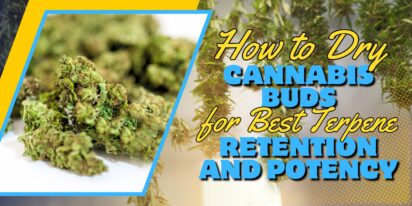
Drying cannabis properly is a critical process in preserving the plant's full aroma and flavor and its psychoactive abilities. Tampering with th

Ever caught yourself a bit too high and all of a sudden in need of being normal? Whether you're heading out for munchies or bumping into someone

Looking for sage advice on how not to get pinched with weed without batting an eye? Attempting to protect your stash from gossipy roommates, sno
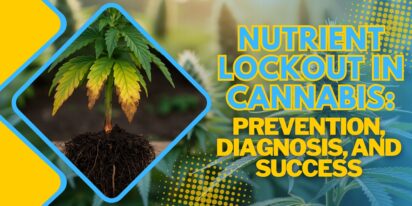
Nutrient lockout, also known as nutrient binding or chemical antagonism, is a significant issue in cannabis cultivation that negatively impacts
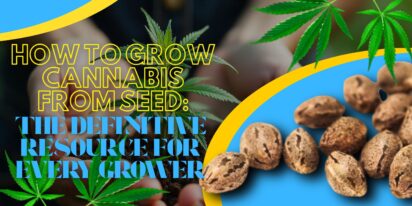
Germination is the most critical initial stage in growing healthy, high-quality cannabis plants. During germination, the dormant seed becomes a
Are You 18 Or Over?
By selecting “Continue”, you confirm that you are at least 18 years of age and legally permitted to access cannabis related content in your region.
By using Rocketseeds.com, you agree to our legal disclaimer.
Excellent blog here Also your website loads up very fast What web host are you using Can I get your affiliate link to your host I wish my web site loaded up as quickly as yours lol
Your writing is not only informative but also incredibly inspiring. You have a knack for sparking curiosity and encouraging critical thinking. Thank you for being such a positive influence!
Simply wish to say your article is as amazing The clearness in your post is just nice and i could assume youre an expert on this subject Well with your permission let me to grab your feed to keep updated with forthcoming post Thanks a million and please carry on the gratifying work
Somebody essentially lend a hand to make significantly articles Id state That is the very first time I frequented your website page and up to now I surprised with the research you made to make this actual submit amazing Wonderful task
Your blog is a beacon of light in the often murky waters of online content. Your thoughtful analysis and insightful commentary never fail to leave a lasting impression. Keep up the amazing work!
Thank you for the auspicious writeup It in fact was a amusement account it Look advanced to more added agreeable from you By the way how could we communicate
Your blog is a constant source of inspiration for me. Your passion for your subject matter shines through in every post, and it’s clear that you genuinely care about making a positive impact on your readers.
Your blog is a constant source of inspiration for me. Your passion for your subject matter is palpable, and it’s clear that you pour your heart and soul into every post. Keep up the incredible work!
Your articles never fail to captivate me. Each one is a testament to your expertise and dedication to your craft. Thank you for sharing your wisdom with the world.
Your blog is a testament to your dedication to your craft. Your commitment to excellence is evident in every aspect of your writing. Thank you for being such a positive influence in the online community.
Your writing has a way of resonating with me on a deep level. I appreciate the honesty and authenticity you bring to every post. Thank you for sharing your journey with us.
Your blog is a true gem in the world of online content. I’m continually impressed by the depth of your research and the clarity of your writing. Thank you for sharing your wisdom with us.
Hi i think that i saw you visited my web site thus i came to Return the favore Im attempting to find things to enhance my siteI suppose its ok to use a few of your ideas
Somebody essentially help to make significantly articles Id state This is the first time I frequented your web page and up to now I surprised with the research you made to make this actual post incredible Fantastic job
Usually I do not read article on blogs however I would like to say that this writeup very compelled me to take a look at and do so Your writing taste has been amazed me Thanks quite nice post
Your blog has quickly become one of my favorites. Your writing is both insightful and thought-provoking, and I always come away from your posts feeling inspired. Keep up the phenomenal work!
Every time I visit your website, I’m greeted with thought-provoking content and impeccable writing. You truly have a gift for articulating complex ideas in a clear and engaging manner.
Hey there You have done a fantastic job I will certainly digg it and personally recommend to my friends Im confident theyll be benefited from this site
I have read some excellent stuff here Definitely value bookmarking for revisiting I wonder how much effort you put to make the sort of excellent informative website
Nice blog here Also your site loads up very fast What host are you using Can I get your affiliate link to your host I wish my site loaded up as quickly as yours lol
What i do not understood is in truth how you are not actually a lot more smartlyliked than you may be now You are very intelligent You realize therefore significantly in the case of this topic produced me individually imagine it from numerous numerous angles Its like men and women dont seem to be fascinated until it is one thing to do with Woman gaga Your own stuffs nice All the time care for it up
Your blog is a beacon of light in the often murky waters of online content. Your thoughtful analysis and insightful commentary never fail to leave a lasting impression. Keep up the amazing work!
Your blog is a breath of fresh air in the often stagnant world of online content. Your thoughtful analysis and insightful commentary never fail to leave a lasting impression. Thank you for sharing your wisdom with us.
Your blog is a beacon of light in the often murky waters of online content. Your thoughtful analysis and insightful commentary never fail to leave a lasting impression. Keep up the amazing work!
Usually I do not read article on blogs however I would like to say that this writeup very compelled me to take a look at and do it Your writing style has been amazed me Thank you very nice article
Your writing has a way of resonating with me on a deep level. I appreciate the honesty and authenticity you bring to every post. Thank you for sharing your journey with us.
This hydroponics guide is quite the buzz, seriously! Who knew growing weed without dirt could be so complicated yet potentially rewarding? The breakdown of systems like DWC and NFT is helpful, though I suspect my cat might confuse the air pump for a toy. The idea of cleaner buds is tempting, especially since explaining hydro weed to my non-growing friends might get messy. And the bit about potential dizziness from hydro weed? Perfect, now I have an excuse for why I always stumble a bit after a grow session. Still, the promise of faster grows and higher yields is hard to ignore, even if it means more trips to the pH meter than to the coffee shop. Overall, a cultivating read for the curious grower!